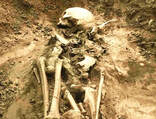
DNA from teeth in seven human skeletons 4,500-year-old shows that plague struck Bronze Age peoples in Europe and Asia. Photo Credit: Harri Moora - Photo Source: sciencenewsforstudents.org
When the press and medical professionals began referring to COVID-19 as a Pandemic, I thought of our current situation as unprecedented and believed this point in history to be unique. And it is, in a way, if only because the exact set of circumstances never occur twice. After I started researching this blog, I realized how often in history human beings have faced similar events.
And still, the human race survives. It’s hard, if not impossible, to put a current event into proper perspective. Just remember, all of the numbers being thrown around are estimates and not precise for a lot of reasons.
A PANDEMIC OF EPIDEMICS
While the details of what constitutes an epidemic vs. a pandemic may be a matter of interpretation or opinion, history began recording these mass infections from diseases before Christ. Which of the many pandemics are the “worst” is debatable, depending on the criteria used.
3,000 BC Bronze Age Epidemics
Death toll: Unknown:
Causes: Unknown [Probably Bubonic Plague]
Scientists have found the plague strains [I assume the sources refer to Bubonic Plague] in the Bronze age were similar to the bacteria guilty of later pandemics, but believe they were less virulent and less transmissible in the ancient past. Still, this period in history experienced sudden mass migrations, and some theorize the movement resulted from epidemics of disease. Based on the map, it seems the Bronze Age migration was from the steppes of Russia to the west and south. Map source: nature.com/news/bronze-age-skeletons
Death Toll: 100,000
Cause: Smallpox [most likely], possibly by typhus or bubonic plague.
In the 2nd year of the Peloponnesian War, 430 BCE, an outbreak of plague erupted in Athens and spread throughout scattered parts of Greece and the eastern Mediterranean until finally dying out in 426 BCE. The origin of the epidemic occurred in sub-Saharan Africa just south of Ethiopia.
165 AD The Antonine Plague
Death Toll: 5 million
Cause: Unknown; thought to be either smallpox or measles
The Antonine Plague, brought by Roman soldiers returning from Mesopotamia, affected Asia Minor, Egypt, Greece, and Italy.
165 AD Plague of Justinian
Death Toll: 25 million
Cause: Bubonic Plague
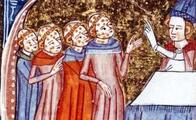
Photo source: wileyearthpages.wordpress.com/Justinian
1346-1353 The Black Death
Death Toll: 75 – 200 million
Cause: Bubonic Plague
The Bubonic Plague [often called The Black Death] ran rampant in Europe, Africa, and Asia from 1346 to 1353. Believed to have originated in Asia, the disease was spread by a bacillus called “Yersina pestis” [discovered at the end of the 19th century], which lived on the rat fleas and rats thriving on ships. Today scientists know the bacillus can travel from person to person through the air, as well as through the bit of infected fleas or rats. Both of these pests could be found almost anywhere in medieval Europe. Flea infected with Yersinia pestis - Photo source: commons.wikimedia.org/Flea_yersinia
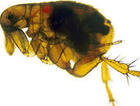
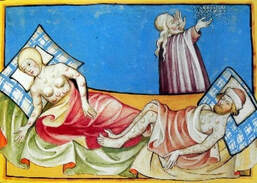
Photo source: historic-uk.com/HistoryUK
1665 AD The Great Plague of London
Death Toll: 100,000
Cause: Bubonic Plague
London never really squelched the Bubonic plague. Between 1346 and 1665 epidemics hit London about every twenty years – forty outbreaks in three hundred years – each episode killing off twenty percent of the population. Around 1500, England imposed laws to isolate the sick.
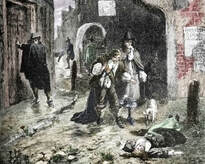
“Homes stricken by plague were marked with a bale of hay strung to a pole outside. If you had infected family members, you had to carry a white pole when you went out in public. Cats and dogs were believed to carry the disease, so there was a wholesale massacre of hundreds of thousands of animals.”
London street scene, Great Plague of 1665 - Photo credit: The Print Collector/Getty Images
Photo source: history.com/news/plague and openhistorysociety.org
The worst was saved for last. The Great Plague in 1665 killed 100,000 in seven months. Victims were forcibly confined to their homes, and nearly everything else closed down. Bodies were buried in mass graves. Harsh, indeed, but the actions helped bring the plague to an end.
Death toll: 10 million plus Podcast Episodes » #48:
Cause: Smallpox Photo source: historyonthenet.com/48
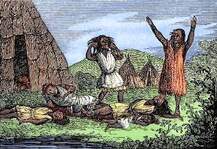
In the late 18th century, British Doctor Edward Jenner developed a treatment which resulted in smallpox being the first virus epidemic ended by a vaccine.
1852 to 1860 Third Cholera Pandemic
Death toll: One million
Cause: Cholera
The 1852-1860 pandemic of Cholera was the worst of seven outbreaks. The pandemic started in India and spread through Asia, Europe, North America, and Africa. In 1854, a British physician John Snow discovered that contaminated water was the manner in which the disease was transmitted.
1899-1923 Sixth Cholera Pandemic
Death toll: 1.5 million [800,000 in India, 11 in US]
Cause: Cholera
By the sixth world Cholera pandemic, medical science and public health had advanced enough in the US and Western Europe to keep outbreaks in those counties at a minimum. This episode began, as most others, in India [where it killed 800,000 people] and then spread to the Middle East, Eastern Europe, North Africa, and Russia.
Only eleven people died in the US during this last outbreak, when the steamship Moltke brought infected people from Naples to New York City. The infected were quarantined on an island until they were cured or not infected. However, the quarantine reinforced the perception that all immigrants carried diseases and should be kept out.
1918-1920 Influenza Pandemic
Death toll: 20 to 50 million
Cause: Influenza
Between 1918 and 1920 a disturbingly deadly outbreak of influenza tore across the globe, infecting over a third of the world’s population and ending the lives of 20 to 50 million people. Of the 500 million people infected in the 1918 pandemic, the mortality rate was estimated at 10% to 20%, with up to 25 million deaths in the first 25 weeks alone. What separated the 1918 flu pandemic from other influenza outbreaks was the victims -- where influenza had always previously only killed juveniles, the elderly, or already weakened patients -- it had begun striking down hardy and completely healthy young adults, while leaving children and those with weaker immune systems still alive.
1918-1919 Spanish Flu Pandemic
Death toll: 50 million [675,000 in USA]
Cause: Influenza

Victims of Spanish flu at a barracks hospital, Fort Collins, CO 1918.
Photo credits: American Unofficial Collection of World War I Photographs/PhotoQuest/Getty Images
Photo source: history.com/news/spanish-flu
1956-1958 Asian Flu
Death toll: 1 to 2 Million [116,000 in US]
Cause: Influenza
A new flu virus [Avian] originating in Guizhou China, traveled to Shanghai, Singapore, Hong Kong, and then the United States. This virus was a mixed species strain of the previous flu virus; a mutation of the avian virus in wild ducks combining with a pre-existing human strain of the virus. A vaccine was available in 1957. After ten years of evolution, the Asian flu virus disappeared and a new subtype appeared which led to the Hong Kong flu pandemic in 1968.
1968 Hong Kong Flu Pandemic
Death toll: One million [100,000 in US - mostly elderly]
Cause: Influenza
From the first reported case on July 13, 1968 in Hong Kong. In slightly over two weeks, there were cases found in Singapore and Vietnam. In three months, the flu had spread to the Philippines, India, Australia, Europe, and the US. Even though the mortality rate was only 0.5%, the illness resulted in a death toll of one million.
2005-2012 Hiv/Aids Pandemic
Peak Death toll: 36 million
Cause: HIV/ AIDS
“First identified in Democratic Republic of the Congo in 1976, HIV/AIDS has truly proven itself as a global pandemic, killing more than 36 million people since 1981. Currently there are between 31 and 35 million people living with HIV, the vast majority of those are in Sub-Saharan Africa, where 5% of the population is infected, roughly 21 million people. As awareness has grown, new treatments have been developed that make HIV far more manageable, and many of those infected go on to lead productive lives. Between 2005 and 2012 the annual global deaths from HIV/AIDS dropped from 2.2 million to 1.6 million.” https://www.mphonline.org/worst-pandemics-in-history/
2013-2016 Ebola Virus Epidemic
Death toll: 11,323 (West Africa)
Cause: Viral Haemorrhagic Fever
Ebola is a virus disease known as haemorrhagic fever. The virus is spread through direct contact with body fluids, or items recently contaminated with body fluids. It was identified in 1976 when there were two simultaneous outbreaks in Africa. Symptoms show two days to three weeks after contacting and include fever, sore throat, muscular pain, vomiting, diarrhea and rash. Between the first outbreak in 1976 and the beginning of the epidemic of 2013-2016 there had been 2,387 cases and 1,590 deaths.The most recent epidemic in West Africa reported 28,646 cases and 11,323 deaths.
THE CORONAVIRUS
This is not a new disease. There are many viruses categorized as coronavirus. It was first discovered in 1930 in domestic poultry. Only seven of the coronaviruses cause disease in humans.
The good news: Four of the seven viruses only result in the symptoms of the common cold. On occasion, they cause respiratory tract infections, including pneumonia in infants and older people.
The bad news: Three of the seven can be severe and deadly.
2002 SARS
Death toll: 774
Cause: Coronavirus
Severe Acute Respiratory Syndrome is a virus which results in respiratory disease. It is a zoonotic illness which is caused by germs that spread between animals and humans, and originated in Guangdong Province of China. Scientists eventually discovered the virus carried through civets to cave-dwelling horseshoe bats.
2012 MERS
Death toll: 858
Cause: Coronavirus
The Middle East Respiratory Syndrome is also a strain of the Coronavirus which emerged in 2012. Studies implicate dromedary camels as the most likely origin. Physical contact with the saliva of infected camel and drinking milk from infected camels is the suspect transmission route for inflecting humans. Most of the cases, and deaths, were in Saudi Arabia, but the virus did spread to other middle eastern countries. There were only two cases in the US and no deaths. https://en.wikipedia.org/wiki/2012_Middle_East_respiratory_syndrome_coronavirus_outbreakpr
2019-? COVID-19
Death toll: 108,312 worldwide / 515 US
Estimated cases: 417,663 worldwide / 42,000 US
Cause: Coronavirus
SHOULD WE PANIC YET?
As pandemics have gone on the planet earth, COVID-19 doesn’t sound like the most serious in history if you look at death tolls. Keep in mind that the COVID-19 numbers change hourly right now.
Panic? No. Take it seriously? Absolutely.
Of course, the count isn’t in yet, but I’ll stick my neck out and guess that it will be less than a million worldwide. But wait! A million is still a lot of people. We don’t want that!
My Observations
World pandemics have become more frequent in the last hundred and fifty years or so. Contemporary travel and communications have changed the equation, and population, as well as population densities, have increased dramatically nearly everywhere, encroaching on the habitat of wild animals who originate the diseases.
The world is better prepared to face a super-virulent virus today than it was a century ago, but in general we are not well prepared to handle potential increases and severity of pandemics. I found several pre-2019 that predicted another outbreak of coronavirus. If health officials reacted at all, it wasn't enough.
So, yes, COVID-19 is a unique “first-time-in-history” event which I see moving along on two parallel [for the moment] tracks … the health/disease control track and the political track.
I trust the health/disease track to move forward with vaccines and treatments for this particular virus and take steps for handle the next mutation of bacterial and viral disease with better preparation. Fortunately, science comes through sooner or later. We just need to listen to the scientists.
However, the manner in which this pandemic is handled politically and the interaction of many countries in the world could well direct significant future events history.
I’m sorry I won’t be around to see what happens in the long term.
□
Sources:
http://news.discovery.com/human/health/10-worst-epidemics-130917.htm
http://www.cbc.ca/news/technology/cholera-s-seven-pandemics-1.758504
http://www.ncbi.nlm.nih.gov/pmc/articles/PMC3867475/
http://content.time.com/time/specials/packages/completelist/0,29569,2027479,00.html
http://www.infoplease.com/cig/dangerous-diseases-epidemics/bubonic-plague.html
http://www.who.int/csr/resources/publications/surveillance/plague.pdf
http://healthvermont.gov/prevent/Plague.aspx
http://www.historylearningsite.co.uk/black_death_of_1348_to_1350.htm
http://www.loyno.edu/~history/journal/1996-7/Smith.html
http://www.nytimes.com/2010/11/01/health/01plague.html?_r=0
http://news.bbc.co.uk/2/hi/health/4381924.stm
http://www.loyno.edu/~history/journal/1996-7/Smith.html
http://www.infoplease.com/cig/dangerous-diseases-epidemics/smallpox-12000-years-terror.html
http://www.who.int/mediacentre/factsheets/fs360/en/index.html
http://www.avert.org/worldstats.htm
http://www.cdc.gov/hiv/statistics/basics/
http://www.history.com/topics/1918-flu-pandemic
http://www.infoplease.com/cig/dangerous-diseases-epidemics/smallpox-12000-years-terror.html
http://www.who.int/bulletin/volumes/89/7/11-088815/en/
https://www.ancient.eu/article/939/the-plague-at-athens-430-427-bce/
https://www.openhistorysociety.org/members-articles/the-great-plague-of-london-1665/
https://www.historic-uk.com/HistoryUK/HistoryofEngland/The-Great-Plague/
https://www.sciencenewsforstudents.org/article/earliest-evidence-plague
https://www.who.int/cholera/the-forgotten-pandemic/en/
https://en.wikipedia.org/wiki/1846%E2%80%931860_cholera_pandemic
https://www.history.com/news/spanish-flu-second-wave-resurgence
https://www.historyonthenet.com/48-native-americans-resistant-old-world-diseases-different-new-world
https://zidbits.com/2011/01/why-didnt-europeans-get-wiped-out-by-native-americans-diseases/
https://www.merckmanuals.com/professional/infectious-diseases/respiratory-viruses/coronaviruses-and-acute-respiratory-syndromes-covid-19,-mers,-and-sars
https://www.cdc.gov/flu/pandemic-resources/1957-1958-pandemic.htmlhttps://www.nature.com/news/bronze-age-skeletons-were-earliest-plague-victims-1.18633
https://en.wikipedia.org/wiki/Ebola_virus_disease
https://www.history.com/topics/middle-ages/pandemics-timeline
https://www.newsweek.com/coronavirus-mortality-rate-covid-19-fatalities-ebola-sars-mers-1489466
https://www.ft.com/content/8521d81e-1c0f-11ea-81f0-0c253907d3e0
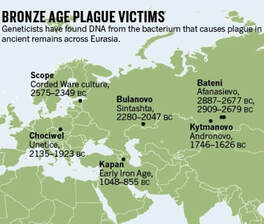




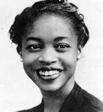
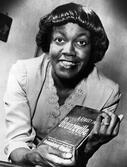
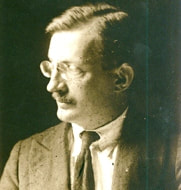
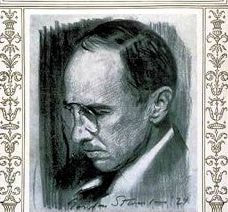
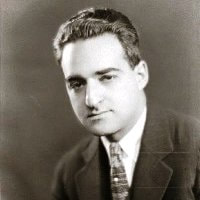



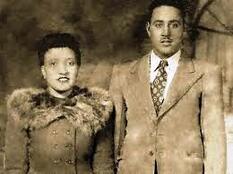



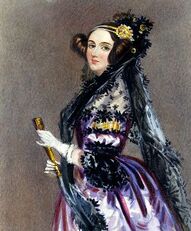
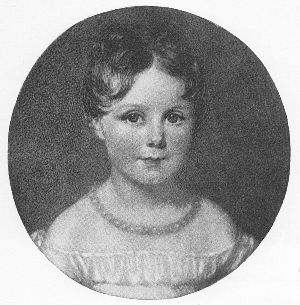
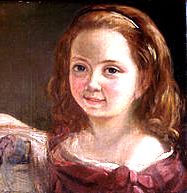
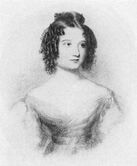
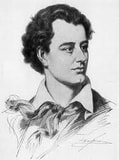
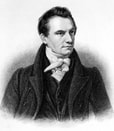


 RSS Feed
RSS Feed